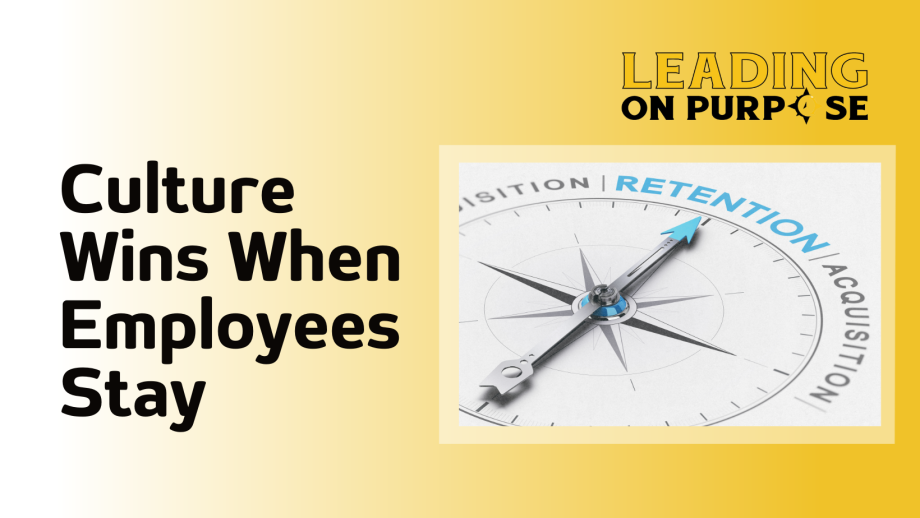
What 'The Great Stay' Means for Leaders and Organizations
In the last Leading On Purpose blog post, I talked about The Great Stay from the employee's perspective. Workers aren't exactly rushing for the exits right now. Due to economic uncertainty, hiring freezes, and layoff fears due to AI, people are staying rooted right where they are.
The Great Stay is this current period in the job market where employees are choosing stability over risk. Fewer workers are walking away from their jobs. The U.S. quit rate has dropped to just 2.2%, according to the Bureau of Labor Statistics, a sharp contrast to the height of the Great Resignation, when over 4 million people were quitting every month.
But there's a hidden trap... Stability for employees doesn't automatically equal growth for organizations. If organizational leaders simply take advantage of this season by doing nothing, what you’ll really get is a stagnant culture, and when the job market swings back, those “stable” employees will be gone in a heartbeat.
Why People Stay
Employees rarely stay put for one reason alone. Here are the most common drivers:
- Career Trajectory: If people see potential for promotion, upskilling, and meaningful advancement, they’re far more likely to commit.
- Relationships and Belonging: Solid work friendships, supportive managers, and alignment with company culture create loyalty that paychecks alone can’t buy.
- Equity and Reputation: The longer someone stays, the more credibility and influence they build. That internal equity often leads to bigger projects and better opportunities.
- Meaning and Values: When the work matters, when it connects to personal values and feels purposeful, employees are willing to stay even if the grass looks greener elsewhere.
- Familiarity and Comfort: For some, staying is simply the path of least resistance. Job changes are disruptive, and sticking with the known feels safer.
These reasons highlight a critical truth: culture is the multiplier. Without a healthy, engaging culture, even the best promotion or perk will only hold people for so long.
The Great Stay is a Leadership Test
Don't allow your organization to coast. Prove that your culture is worth staying at even when employees could leave. Cohesive Leaders will use this time to set themselves apart from competitors by doubling down on culture.
That means:
- Showing appreciation consistently. Gratitude is cheap, but its return is massive. Publicly acknowledge contributions, send thank-you notes, or highlight wins in team meetings.
- Strengthening team bonds. With less turnover, you’ve got a rare chance to deepen trust and belonging. Encourage cross-team projects, mentorship, or team rituals.
- Building resilience. If people are staying longer, don’t let them stall. Give them opportunities to grow inside your organization. For example, new projects, skill-building initiatives, or leadership responsibilities are fantastic chances for employees to grow and develop.
- Engage hybrid and remote teams: Make sure remote employees feel included. Use virtual team-building, regular check-ins, and collaboration tools to maintain cohesion across distances.
The ROI of Investing in Culture
Building and reinforcing culture is a strategic advantage:
- Lower turnover: Retention saves on recruitment, onboarding, and training costs.
- Higher productivity and collaboration: Teams with trust and cohesion get more done with less friction.
- Future adaptability: Cohesive, engaged employees are better equipped to adapt to change whether that’s AI, new technology, or market shifts.
Why Culture Matters More in The Great Stay
Employees may be staying for security right now, but a strong culture makes them glad they’re staying. That difference is everything. Because when the job market rebounds, retention won’t come down to who has the best salary offer. It’ll come down to who invested in their people during this season.
Don’t mistake employee stability for organizational safety. Use this moment to:
- Build belonging.
- Sharpen leadership development.
- Model cohesion in every corner of your culture.
The Great Stay won’t last forever. But the organizations that invest in people today will be the ones employees choose to stay with tomorrow.








